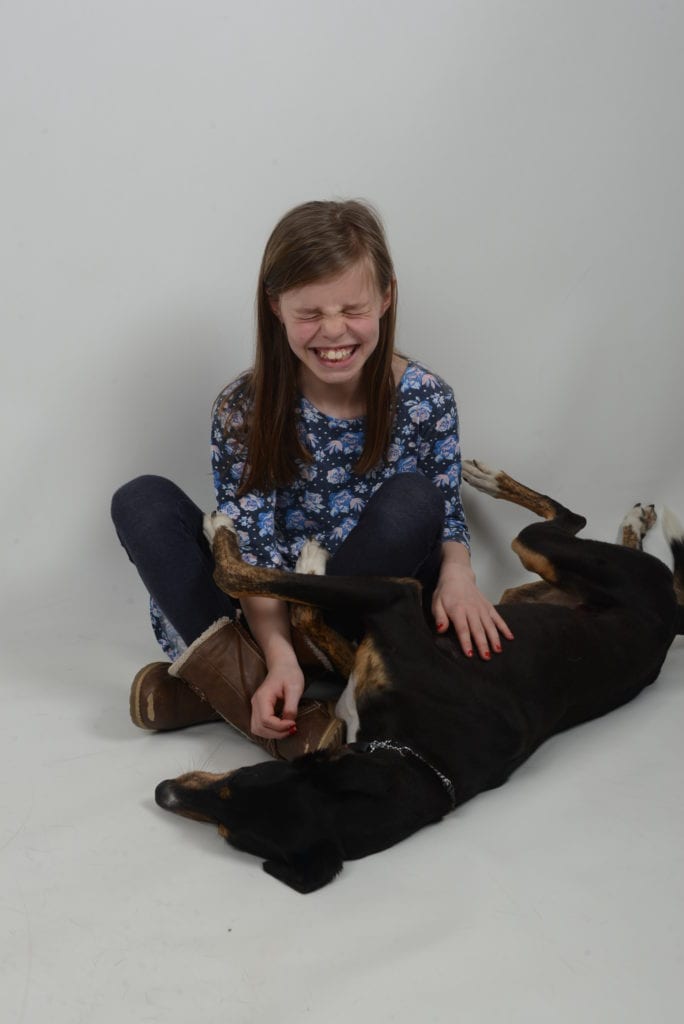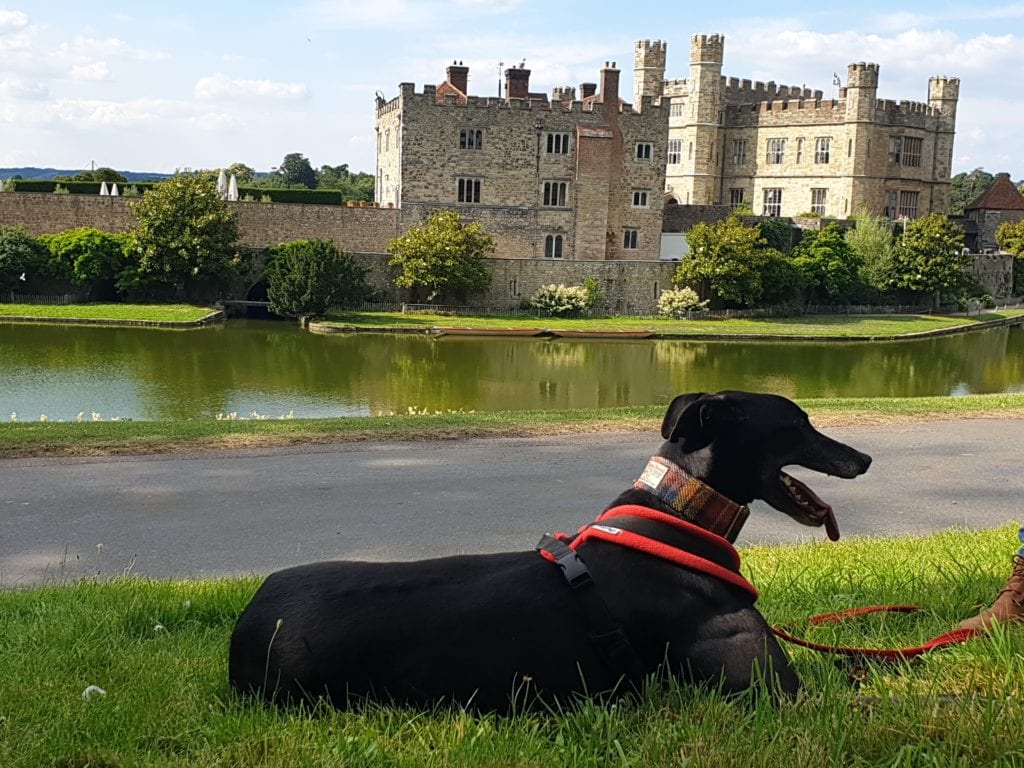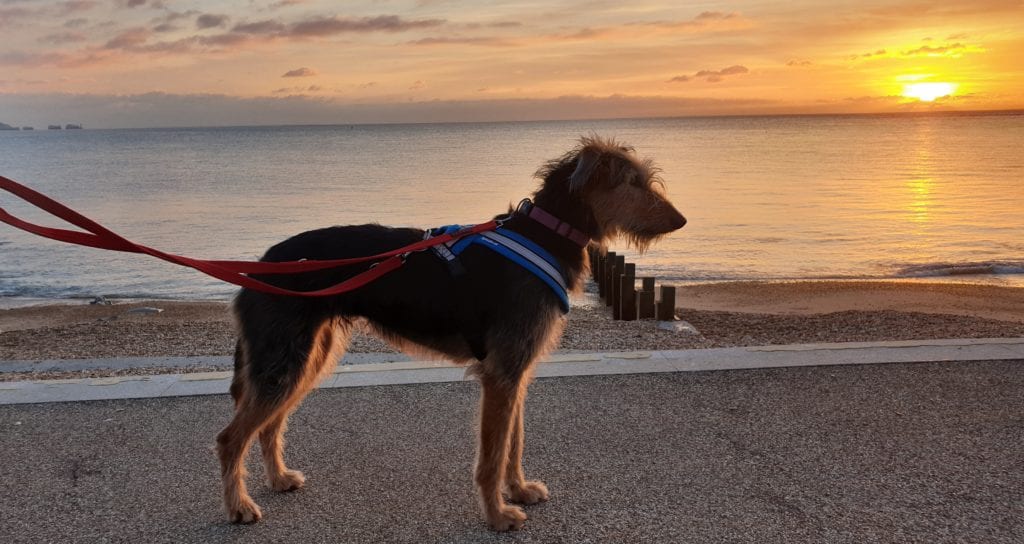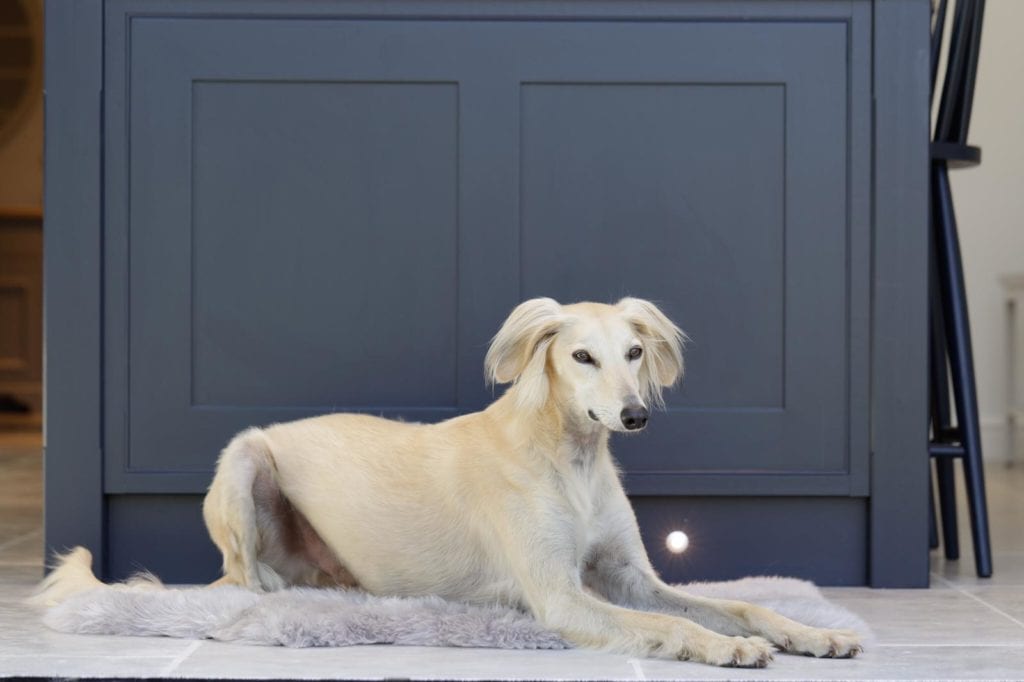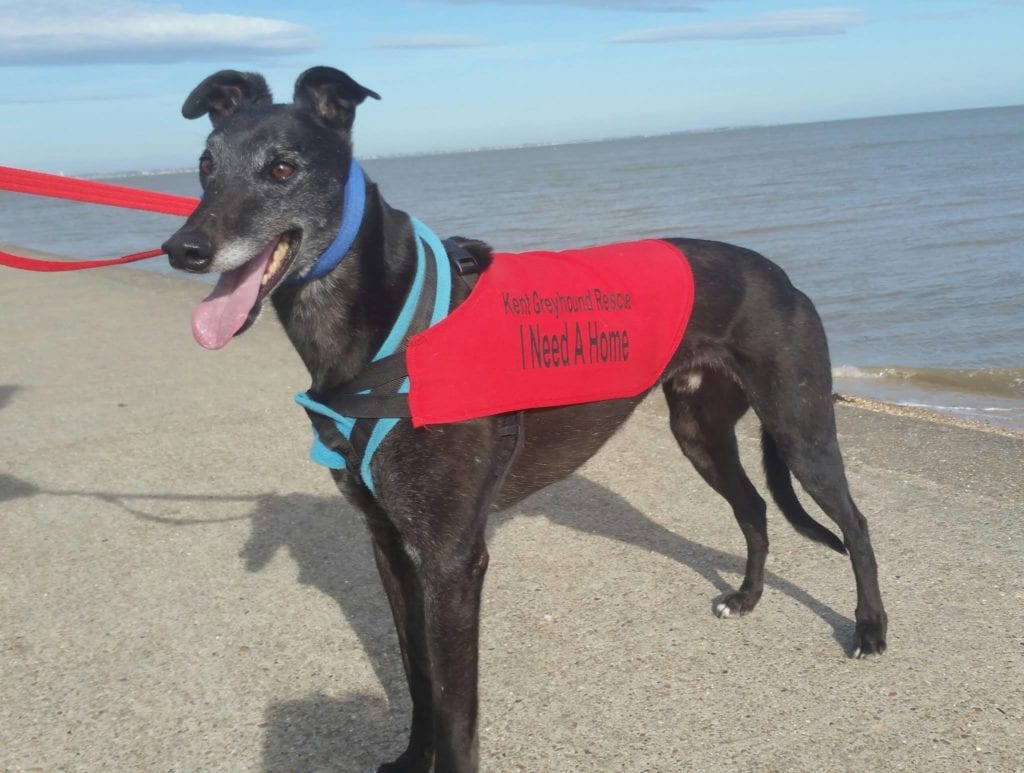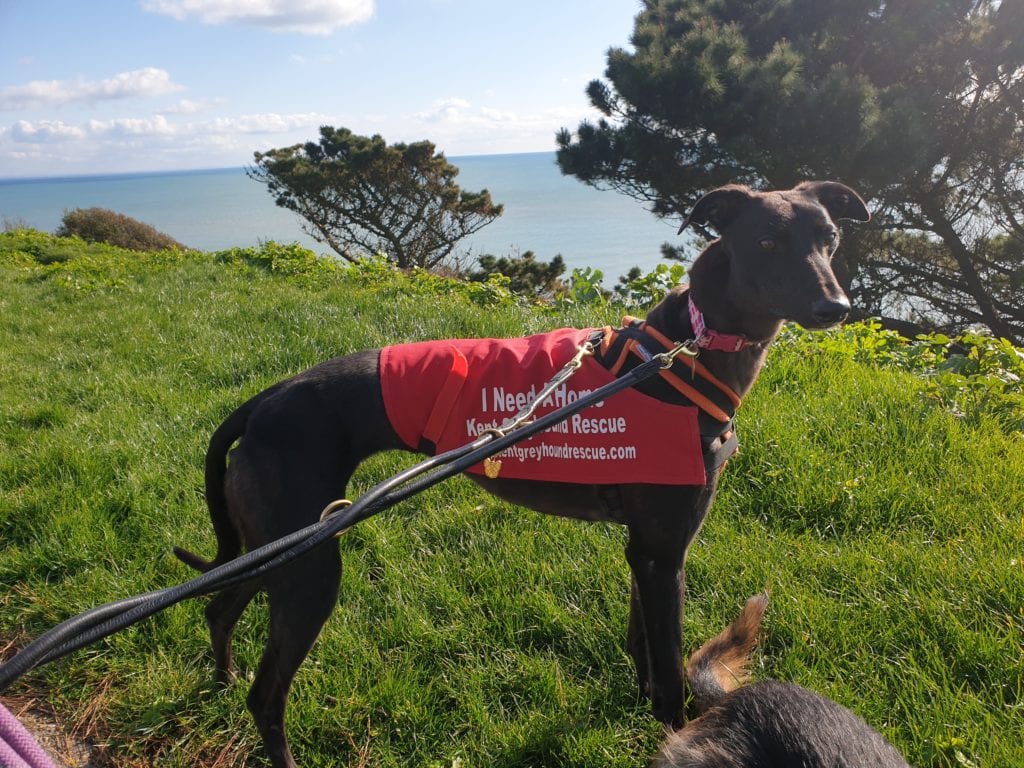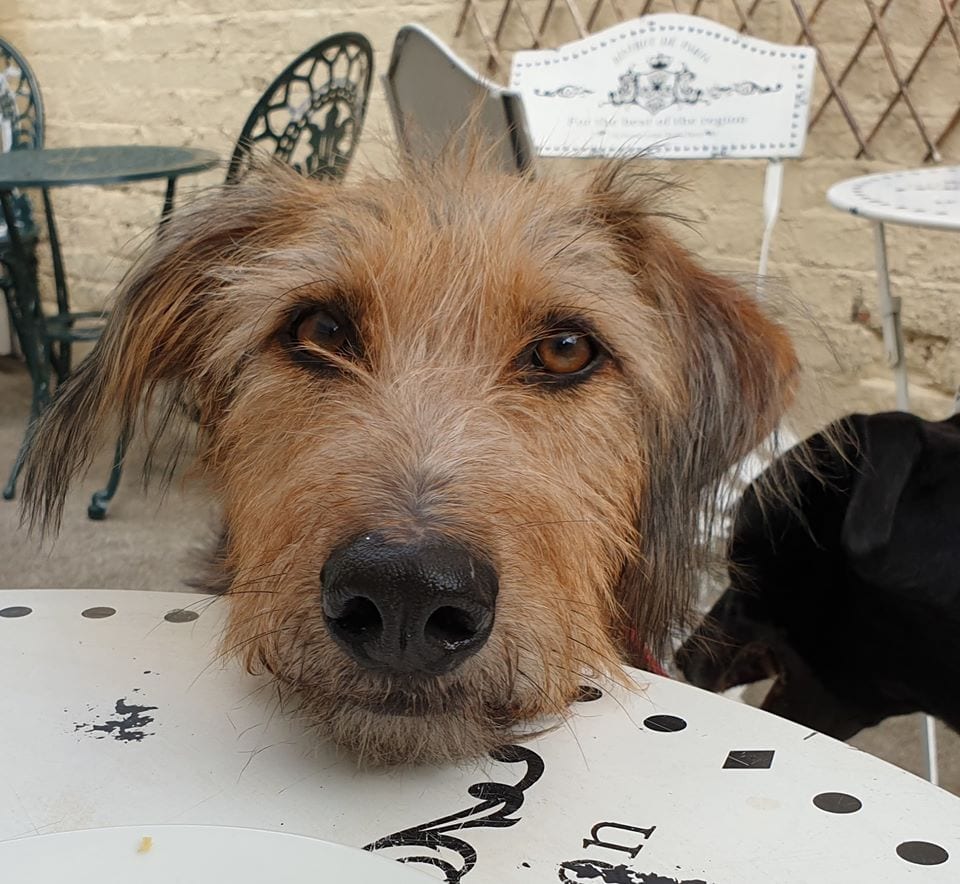KGR does not rehome greyhounds or lurchers to families with children under the age of 10.
Greyhounds, Lurchers And Children
KGR does not rehome greyhounds or lurchers to families with children under the age of 10.
This is because most of our dogs have had no experience of living in a family home and are often from the dog pound. We are unable to assess our dogs with children, so we have no idea how they will be with children. We will only make an exception to these rules for young puppies or if a dog comes to us for rehoming from a family home.
No matter how well behaved your children are – it would be irresponsible of us to place an unassessed dog in your home.
As adorable as young children are, they are still noisy, fast and can be clumsy. A dog, who has always lived in a kennel environment, will have only met adult humans. Your dog may have no understanding of what a child is and may be frightened. Your child may not understand that the dog is scared. Most situations occur when the dog is frightened, not because he is aggressive.
We will consider families with children age 10 and over but even with older children you need to think very carefully whether a greyhound or lurcher is right for your family situation and home environment.
If your child is over 10 please read on and ask yourself whether you can honestly say yes to all the points we raise below.
A lot of rescues will not rehome dogs to families with even older children because even a fully assessed dog can:
- Have a fright and react in an unpredictable way;
- Be pushed to the limit of its patience by a child,. This is usually because boundaries are not being enforced by the parent;
- Be awakened from a deep sleep or a bad dream and react in an out-of-character way.
Dogs are sometimes returned to rescue centres (or relinquished to rescue centres) because they have snapped at a child. They are normally not bad dogs, but are nevertheless labelled aggressive and can be put at risk of being put to sleep. In fact, it is usually because parents have not enforced boundaries or they have not organised their home so that children and dogs can be kept separate when they are not being supervised.
By ‘supervision’, we mean actively paying attention to the interaction between your child and dog, not listening from upstairs, working at a desk in the corner or reading on the sofa. You need to take responsibility for the interaction between the dog and the child.
Before considering adopting a dog from KGR or anywhere else, you need to consider 2 things:
- Will your children respect the dog and give it space? A dog is not a toy and children – without any exceptions or excuses – need to understand this.
- Will your children leave the dog alone if your ask them to? If they will not, do not or you cannot enforce this request, then you put both your child and the dog at risk.
If this answer is no to either of the above – then you need to delay getting a dog until your children are able to give the dog respect and space.
Although we can do our best to test the temperament of a dog, we cannot test for children who do not understand the importance of following rules and set boundaries with their dog, or parents who will not enforce the simple rules of children living happily with dogs. If you have children and you are considering rehoming a dog or a puppy from KGR, we will expect the following:
You must understand the importance of actively supervising your child and dog when they are together.
- You will be expected to demonstrate at your homecheck where the dog will stay when you cannot actively supervise the interaction between the dog and your child. Preferably it will be a room you don’t use all the time, with a gate across the door. (Most dogs will not enjoy a closed door when the family are in the house). Or a crate tucked into the corner of the living room / kitchen. Your child must be able to follow instructions to leave the dog where it is. This space will also be essential when children visit.
- Your child needs to understand that if you say no, to whatever he or she is doing with the dog, you actually mean no and they need to stop. No excuses. Only you know whether your child has self-control. It is not something you can put an age recommendation on – even a 14 year old can jump off a sofa and land on a dog.
- You will be expected to ensure your dog has a quiet place to sleep where it will never be disturbed. This a really important rule and your child must be able to always keep to this rule. No one, including children must ever suddenly wake a sleeping dog – greyhounds can often sleep with their eyes open and appear to be awake. If your dog is asleep, or in its bed, your children need to respect the dog’s space – a dog is not a toy.
Training is really important – training classes are fun and the whole family should attend.
- You will be expected to attend a training course with the whole family. You need to understand this might clash with bedtimes, or meal times. If there are no suitable classes that will welcome your whole family, then you must arrange private sessions at your home. You should research availability and costs before adopting the dog.
- You must be prepared to train your dog to stay off the sofa and beds. The dog should be resting in its own bed, where it will not be disturbed. You may need a bed in more than one room. This is very important if you have children.
- You must feed the dog alone, where he will not be disturbed by children. At your training sessions, your child will learn how to give your dog treats in return for a behaviour, like a sit, or a stay. You must ensure your child does not eat near the dog until he is trained with food manners.
- You must teach your child how to play safely with your dog. It is essential that you seek advice from your trainer because all dogs are different. For example, squeaky toys can be too exciting for some greyhounds and lurchers. Teach your child not to take toys from the dog, not to sit on the dog or pull his fur and not to follow the dog if he moves away.
Understanding doggie signals and what he is trying to tell you.
- You should do some research and learn about dog behaviour. Dogs use lots of signals to tell us they are not happy and it is good to know what these are and what they mean. It is clear that a growl means that the dog is extremely unhappy or uncomfortable and the particular interaction needs to stop immediately, but a dog will normally have told you he is worried or uncomfortable long before he growled. For example, he may have licked his nose, or yawned or moved away. He may have tucked his tail under, or his body may have become stiff. Learn what your dog is trying to tell you.
Please remember!
Before meeting the dogs, please let us know if any of your children are nervous around dogs, have any learning difficulties or have any allergies. This is really important information which we need to match you with the right dog.
These rules may seem excessive but there are a disproportionate number of dogs returned to rescue centres each year because of children. Even, if it is not the dogs fault, it risks the life of the dog.
Think carefully.
It can be really rewarding for your children to grow up around a dog, but do take time to think carefully. Who will walk the dog in the morning and evening when there lots of things to do with the children? It is not appropriate to think a slow walk to school with a child is exercise – it’s not!
Is everyone committed to training the dog? And does everyone want the dog enough to be prepared to put the hard work in.
Can you really commit to our rules? These rules are sensible and good for all dog owning families.
Children and Puppies
If you are considering a puppy, please remember just how much hard work they can be. They chew, they play bite and they are on the go most of the time. Puppies, whether with children or not need someone to be around most of the time. Consider carefully whether you have really got the time and commitment? If you have, then a puppy is a great idea. But if you don’t then please wait until you have the time and your children are older. It is really unfair on a puppy to adopt him then find out you don’t have the time for him. He may have missed out on valuable training but you will also have deprived another family of adopting a young puppy.
Children and Cats
Unless the dog is 100% cat friendly, we do not rehome to families who have both children and cats. The cat training can be time consuming and if you don’t have the time to do it correctly it puts both the cat and the dog at risk. A cat friendly dog will have lived in a foster home with cats so we know can live alongside a cat, but it won’t have lived with your cat, or in your environment so you will still have to do the training.
Separation of the animals may be necessary during the early parts of the training. It is really hard for children to remember to ALWAYS close doors. We have had too many dogs returned because the adults did not have the time to follow the guidelines. Mainly because of the children, despite their initial promises. Our dogs are rarely cat friendly – they are more usually cat workable. This means we believe they can be trained to live with cats. But you have to do all the hard work so we only consider homing a cat workable dog to adult/teenage households.
If the dog is marked as cat friendly (rather than cat workable) on his adoption post then it may be able to live with children as some of the work has already been done, but there is still a lot to do.
Do you follow us on Facebook and Instagram?
Everyone at Kent Greyhound Rescue is a volunteer. Our online shop really helps us to pay our kennel and vets bills. We sell everything you need for your dog and all proceeds help the rescue.
